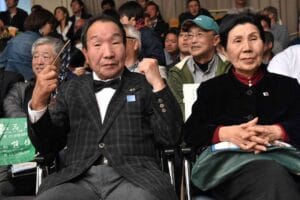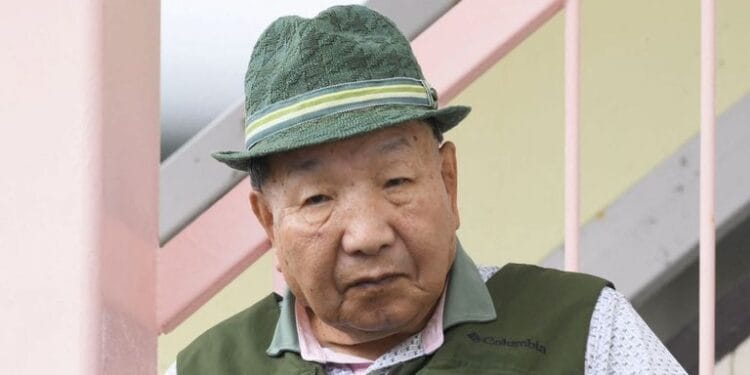No products in the cart.
The Story of Iwao Hakamada: A Journey from Wrongful Conviction to Freedom
Introduction
Iwao Hakamada’s story is one of the most striking cases of wrongful conviction and resilience in modern Japanese history. His ordeal spanned over five decades, from his initial arrest in 1966 to his eventual release in 2014. His journey highlights deep flaws within Japan’s judicial system, particularly its handling of death row inmates and cases where doubt about guilt remains. Here’s a closer look at Iwao Hakamada’s story and the events leading up to his long-awaited release.
The Crime and Arrest
In 1966, a shocking crime took place in Shizuoka, Japan. A factory manager, his wife, and their two children were found murdered in their home, which had been set on fire in an attempt to cover up the crime. The brutality of the case stunned the public and pressured the authorities to find the perpetrator quickly. Iwao Hakamada, who worked at the victim’s miso factory and was a former professional boxer, soon became the prime suspect.
Hakamada was arrested and interrogated by the police, who were eager to secure a confession. Over the course of 20 days, he endured intense questioning, which allegedly involved physical abuse and sleep deprivation. Eventually, Hakamada signed a confession, though he later retracted it, claiming it was coerced through torture. Despite his retraction and lack of solid evidence linking him to the crime, Hakamada was charged with murder, robbery, and arson.

The Trial and Death Sentence
Hakamada’s trial was swift and, in many ways, predetermined. His forced confession played a central role in the prosecution’s case. Additionally, five pieces of clothing, supposedly stained with blood, were presented as key evidence. However, these clothes were found months after the initial investigation, raising concerns about their legitimacy. Hakamada’s defense team argued that the confession was coerced and the evidence unreliable, but their arguments were ignored by the court.
In 1968, Iwao Hakamada was convicted and sentenced to death. His fate was sealed, and he was sent to death row, where he would spend the next 46 years. During this time, the Japanese justice system’s controversial use of the death penalty came under scrutiny, with death row inmates often left in solitary confinement, unaware of when their execution might occur.
Decades of Legal Battles
Over the years following Iwao Hakamada’s conviction, his legal struggles continued. His sister, Hideko Hakamada, became his staunchest supporter, devoting her life to proving her brother’s innocence. She was relentless in her efforts to bring attention to the case, firmly believing that the justice system had wrongfully convicted him. Her unwavering dedication played a key role in keeping Hakamada’s story alive and drawing attention to the flaws in his trial.
A crucial element that gave new momentum to the fight for his retrial was the evidence surrounding the bloodstained clothes. Found months after the crime, these garments were presented as key evidence in his conviction. However, as time passed, concerns arose regarding the validity of this evidence. DNA testing on the clothes suggested that the blood did not match Hakamada’s type. This raised serious questions about the reliability of the evidence used to convict him. Despite this, Hakamada’s pleas for a retrial were consistently dismissed by the courts for many years, further prolonging his unjust imprisonment.
The Breakthrough in 2014
After decades of legal struggles, a breakthrough finally came in 2014. New DNA testing showed that the blood on the clothing did not match Hakamada’s DNA. This revelation, combined with the long-standing concerns about the reliability of the evidence and the coerced confession, led the Shizuoka District Court to grant him a retrial. The court also ordered his immediate release from prison, citing the overwhelming doubt about his guilt and the severe mental toll that his time on death row had taken.
At 78 years old, Iwao Hakamada walked out of prison, a free man for the first time in 48 years. His release was met with widespread media attention, both in Japan and internationally. It was a victory not just for Hakamada and his family, but for advocates of judicial reform who had long criticized Japan’s treatment of death row inmates and its reliance on confessions obtained under duress.
Conclusion
Iwao Hakamada’s story is one of immense tragedy, resilience, and hope. Wrongfully convicted of a brutal crime, he spent nearly five decades on death row before finally being released. His case has exposed serious flaws in Japan’s justice system, from the reliance on forced confessions to the inhumane conditions of death row inmates. While his legal battle is not yet fully over, his release marks a significant step toward justice, not just for Hakamada but for others who may have been wrongfully convicted. His story serves as a powerful reminder of the importance of due process and the need for ongoing reforms to prevent such miscarriages of justice in the future.










